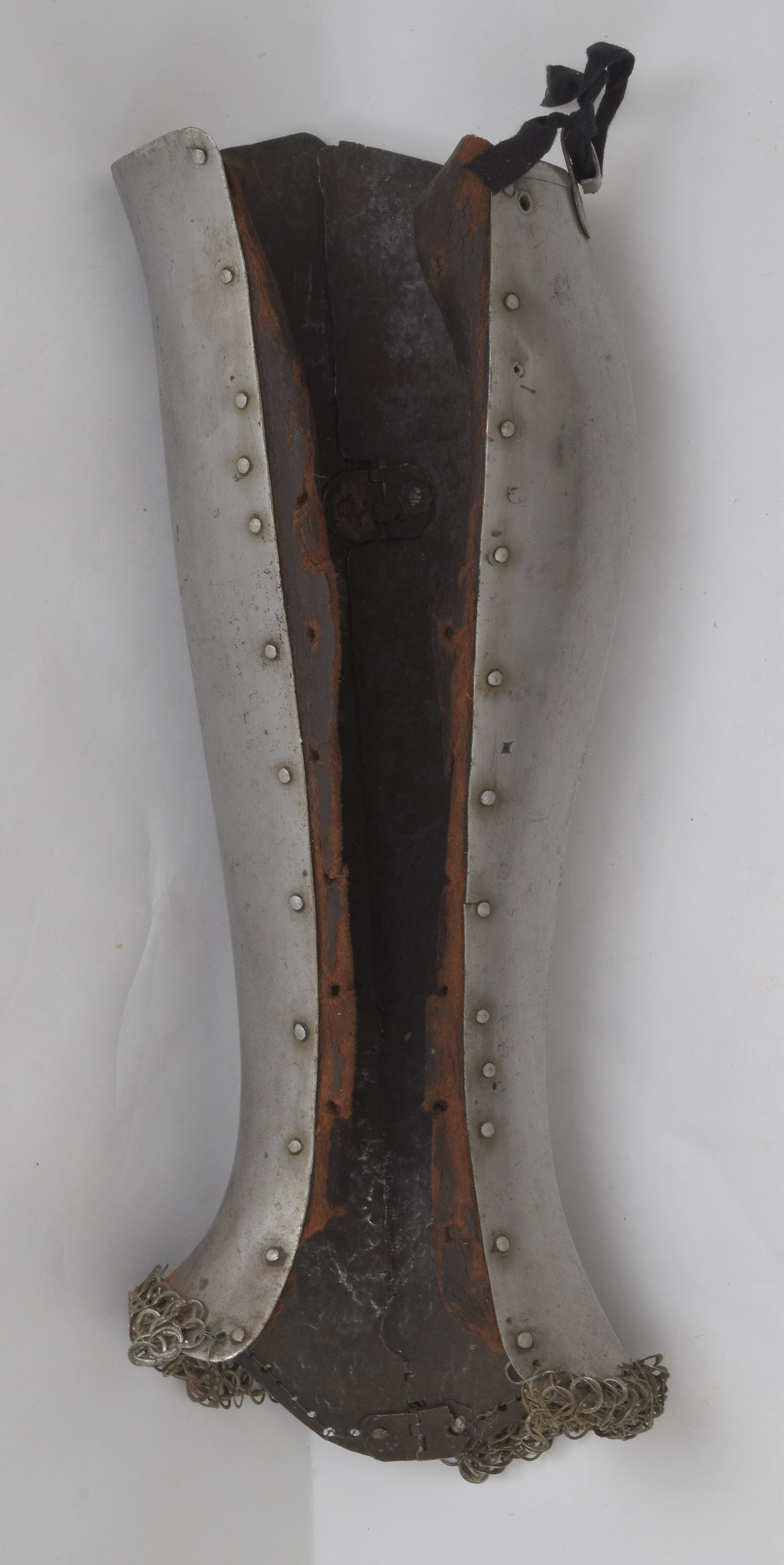



Pair of greaves mid 16th c.
Likely Italian. Formed of two plates, front and rear. Nicely shaped to the leg. The plates are joined at the outside by a pair of inset hinges and at the inside by two strips of leather that would be laced together. The hinges are secured to the inside of the plates. They sit behind the edge of the front plate and are set into cut outs in the rear plate. The edges of the plates are filed with small decorative notches at the hinges. This style of greave was usually used for the joust. It allows a little more flexibility in size and can offer some more contact with the horse. Mail added later, cut from a piece of near or middle eastern mail. Mail at the feet was common on Italian armours, but this is likely a later adaptation. The strips of leather on the inside are late 19th c. or early 20th c. leather showing signs of the red rot that is typical of leathers of that period. They reflect the correct original construction with strips of leather with lace holes.
If you have any questions, please send them to Wade Allen
This site last updated Mon Dec 27 11:29:14 EST 2021